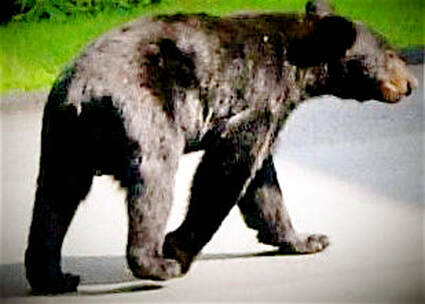|
Public Domain Photo
This is the tenth in a series of profiles offering brief information on every constitutionally-elected Principal Chief of the Cherokee Nation since 1828. Born 13 December 1847, Rogers was a son to Charles Coody Rogers and Elizabeth McCorkle, “Old Settlers” who had settled in the new Indian Territory. He attended tribal schools and eventually became a farmer. He also built his own general store on his own property, and it is said that when Rogers founded the town of Skiatook, he named it for an Osage (Skiatooka) who had frequented his business. Rogers served in the Civil War as a private in the Confederate Army, in Company E of the First Regiment of Cherokee Volunteers. In 1881, after spending many years in farming, he was elected as a representative of the Cooweescoowee District in Cherokee Nation politics. He was re-elected in 1883. Six years later, he ran for tribal senator and won. He married Nannie Haynie in 1892. In 1903, he ran against E.L. Cookson for Principal Chief and emerged victorious. During his tenure, Rogers was viewed by fellow Cherokees as acquiescing to the United States Government in their desire to bring an end to the Cherokee Nation. He was impeached and removed from office in 1905 by the National Council. The Secretary of the Interior stepped in and reinstated Rogers, insisting that he still had power to negotiate for the tribe. Rogers held this questionable position for the next twelve years. Rogers died on 8 November 1917, and is buried in Hillside Mission Cemetery, Skiatook, Oklahoma. ***Bryan D. Jackson’s new release, Chattahoochee Rain (ages 12 and up), is on sale now. It is a historical fiction account that paints a portrait of events during the months leading up to the Cherokee Treaty of New Echota and features some of Bryan’s direct ancestors.
1 Comment
Public Domain Photo
This is the ninth in a series of profiles offering brief information on every constitutionally-elected Principal Chief of the Cherokee Nation since 1828. Thomas Buffington succeeded Chief Joel Bryan Mayes, who died in office in December, 1891. Buffington was born 15 October 1855, in the Going Snake district of Indian Territory. His parents were Ezekiel and Louisa Buffington; he a Georgia native, and she a native of Tennessee. As a youth, Buffington attended Baptist mission schools with other Cherokees. He owned and cultivated land near Mustang Creek in Indian Territory and was so active in agriculture that he was elected President of the Farmer’s Alliance. In 1878, he married another Cherokee, Susan Woodall, who died in 1891. He later married Emma Gray. He moved to Vinita and served as mayor. He also served as a circuit judge for four years and was a devout Presbyterian and Mason. When Chief Mayes died, Buffington, who was head of the Cherokee Senate and had right of succession, assumed the duties of Principal Chief. He served for a short time, then later resigned as mayor of Vinita and ran for Principal Chief and won. He served until 1903. He served a second time and then went back to being Vinita’s mayor until 1917. Chief Buffington died in Vinita, Oklahoma (Oklahoma achieved statehood in 1907) on 11 February 1938. He is buried in Fairview Cemetery, Vinita. ***Bryan D. Jackson’s new release, Chattahoochee Rain (ages 12 and up), is on sale now. It is a historical fiction account that paints a portrait of events during the months leading up to the Cherokee Treaty of New Echota and features some of Bryan’s direct ancestors. Public Domain Photo - courtesy of Emmet Starr, History of the Cherokee Indians.
This is the eighth in a series of profiles offering brief information on every constitutionally-elected Principal Chief of the Cherokee Nation since 1828. Samuel Houston Mayes, younger brother of previous chief, Joel Bryan Mayes, was born 11 May 1845 in Muddy Springs, Indian Territory, near today’s Stilwell, Oklahoma. He was of Scots/English and Cherokee descent. Mayes received a Cherokee education at a tribal school and served in the Civil War as a Confederate soldier. Later, like so many, he was a cattle rancher. Later, he entered politics at the local level when he was elected sheriff of the Cooweescoowee District. He married Martha Vann on 9 November 1871. In 1885, he was elected senator in the Cooweescoowee District and served until 1891. Congress created the Dawes Commission in 1893, the purported purpose being to register members of Native tribes and initiate and monitor allotments of tribal land. In 1895, Mayes was elected Principal Chief. During the first year of his term, the Dawes Commission (chaired by Senator Henry Dawes, a Republican from Massachusetts) essentially hijacked the Cherokee Nation under the cloak of “helping” the Cherokee to determine its rules of citizenship. The Cherokee resisted this encroachment as much as possible but in time were forced to negotiate. Martha died in 1907, the same year Oklahoma became a state, and Mayes eventually remarried a widow named Minnie Ball, nee Harrison, who survived him. Mayes died on 12 December 1927 at his farm in Pryor Creek, OK. He is buried in Fairview Cemetery in Pryor Creek. ***Bryan D. Jackson’s new release, Chattahoochee Rain (ages 12 and up), is on sale now. It is a historical fiction account that paints a portrait of events during the months leading up to the Treaty of New Echota and features some of Bryan’s direct ancestors. |
Yona Ambles"YOH-nuh" (yonv) means "bear" in Cherokee. Thanks for visiting! Archives
January 2024
|




 RSS Feed
RSS Feed
